The Oldest Site in the Present day United States to Be Continuously Inhabited by Europeans is
One of the two continents named after famed traveler Amerigo Vespucci, North America is one of the world's seven continents, consisting of Greenland, Canada, Mexico, the United States of America, and 19 other countries.
Before North America became the "New World," the region was mainly inhabited by the indigenous tribes from as early as 11,000 BCE. Over the centuries, these cities have undergone extensive transformations, but at their core retain many of their earliest cultural influences.
All of the cities on this list are still inhabited today and many of them are the capital cities of their countries.
10. San Juan
Year Founded or First Inhabited: 1508 (moved to present site in 1519)
Country: Puerto Rico
Founder(s): Juan Ponce de León
Current Population: 355,468 (as of 2019)
Total Area: 77 sq mi (199 km²)
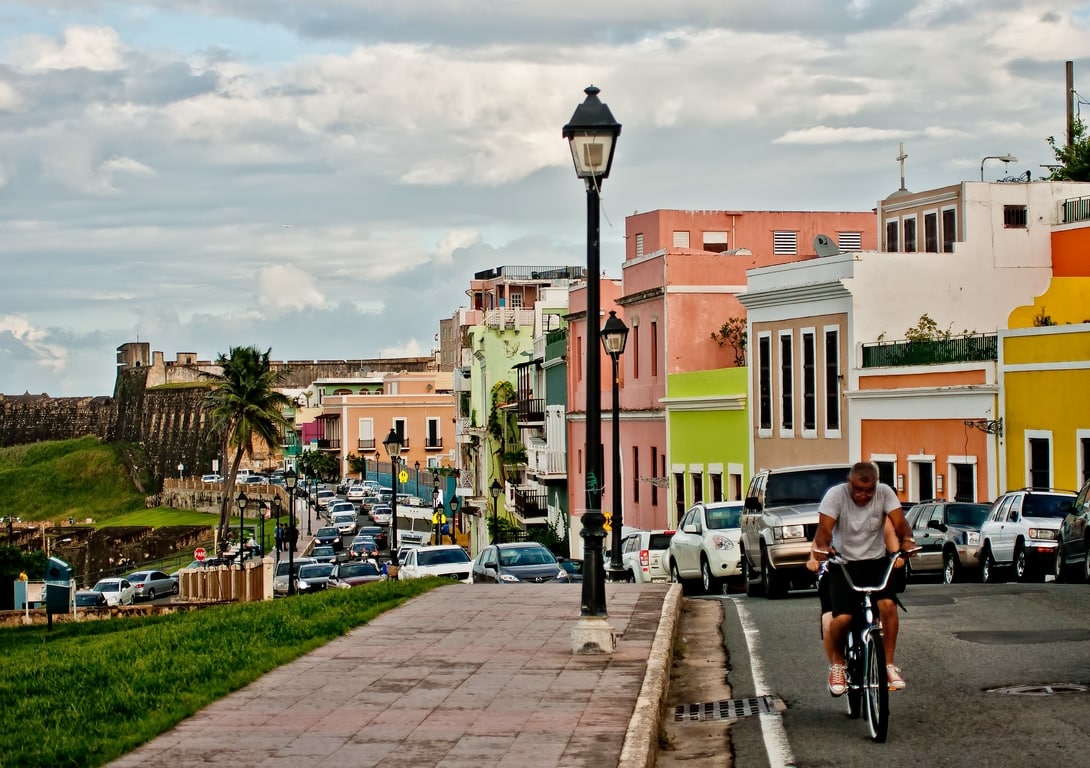 photo source: Flickr via Ricardo's Photography
photo source: Flickr via Ricardo's Photography
Puerto Rico dates back to 1493 when Christopher Columbus claimed the island for Spain and called it San Juan Bautista. In 1508, Spanish explorer Juan Ponce de León founded the first European settlement on the island, Caparra. Not long after, the settlement was moved to the east at the present site of Old San Juan and the island's name was changed to Puerto Rico because of the gold in the river.
San Juan soon rose in importance because of its riches and its location. Since 1519, San Juan has served as the capital of Puerto Rico. Within a few decades after its founding, San Juan had grown to include a university, a hospital, and a library. Eventually San Juan declined in importance to the Spanish empire and after the Spanish-American War, Puerto Rico was ceded to the United States.
Did You Know?
Old San Juan Historic District still has many buildings and houses from the early Spanish colonial days, which makes them some of the oldest post-contact buildings and structures in the United States.
9. St. John's
Year Founded or First Inhabited: 1497
Country: Newfoundland and Labrador, Canada
Founder(s): John Cabot
Current Population: 493,242 (as of 2016 Census) (including provincial capital city, urban, and metro areas)
Total Area: 547 sq mi (1,416.69 km²) (including provincial capital city, urban, and metro areas)
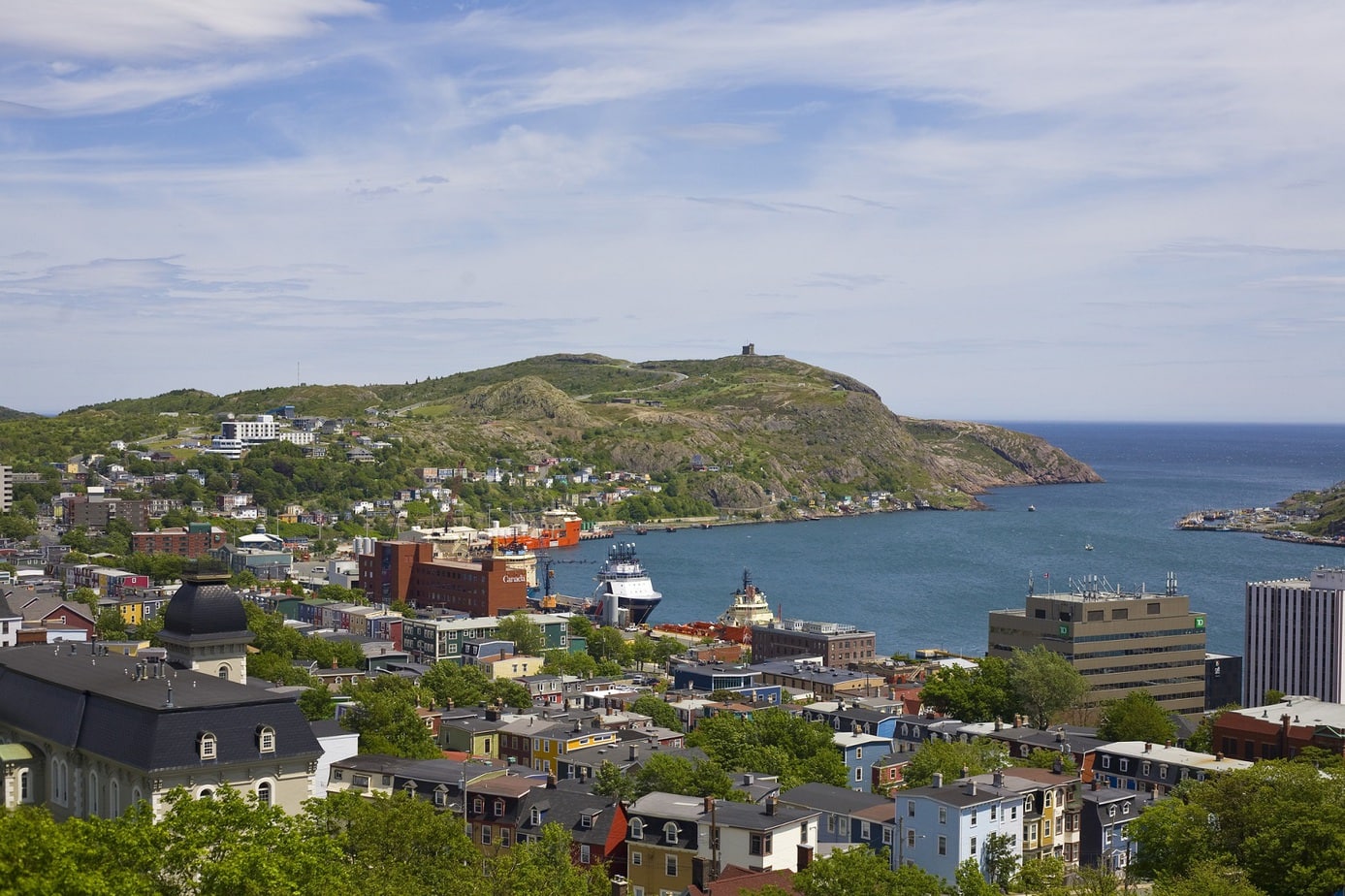 photo source: Flickr via Mike Norton
photo source: Flickr via Mike Norton
St. John's is the capital and largest city of the Canadian province of Newfoundland and Labrador. The city traces its history to 1497 when Italian explorer John Cabot first landed on the shores of what is now Newfoundland and Labrador. St. John's is the oldest European settlements in Canada and one of the oldest overall in North America.
St. John's quickly became a large commercial trading post for the Basques, French, Spanish, Portuguese and English engaged in the fishery along the western side of the North Atlantic. Due to its importance in the fishery trade of the region, St. John's was often targeted by various European countries. The city's earliest recorded battle dates back to 1555. Today, St. John's remains as the main financial and commercial center for Newfoundland and Labrador.
Did You Know?
Italian inventor Guglielmo Marconi received the first transatlantic wireless signal in St. John's in December 1901.
8. Santo Domingo
Year Founded or First Inhabited: 1496 (officially in 1498)
Country: Dominican Republic
Founder(s): Bartholomew Columbus
Current Population: 2,908,607 (as of 2010 Census) (including metro area)
Total Area: 1,041.20 sq mi (2,696.69 km²) (including metro area)
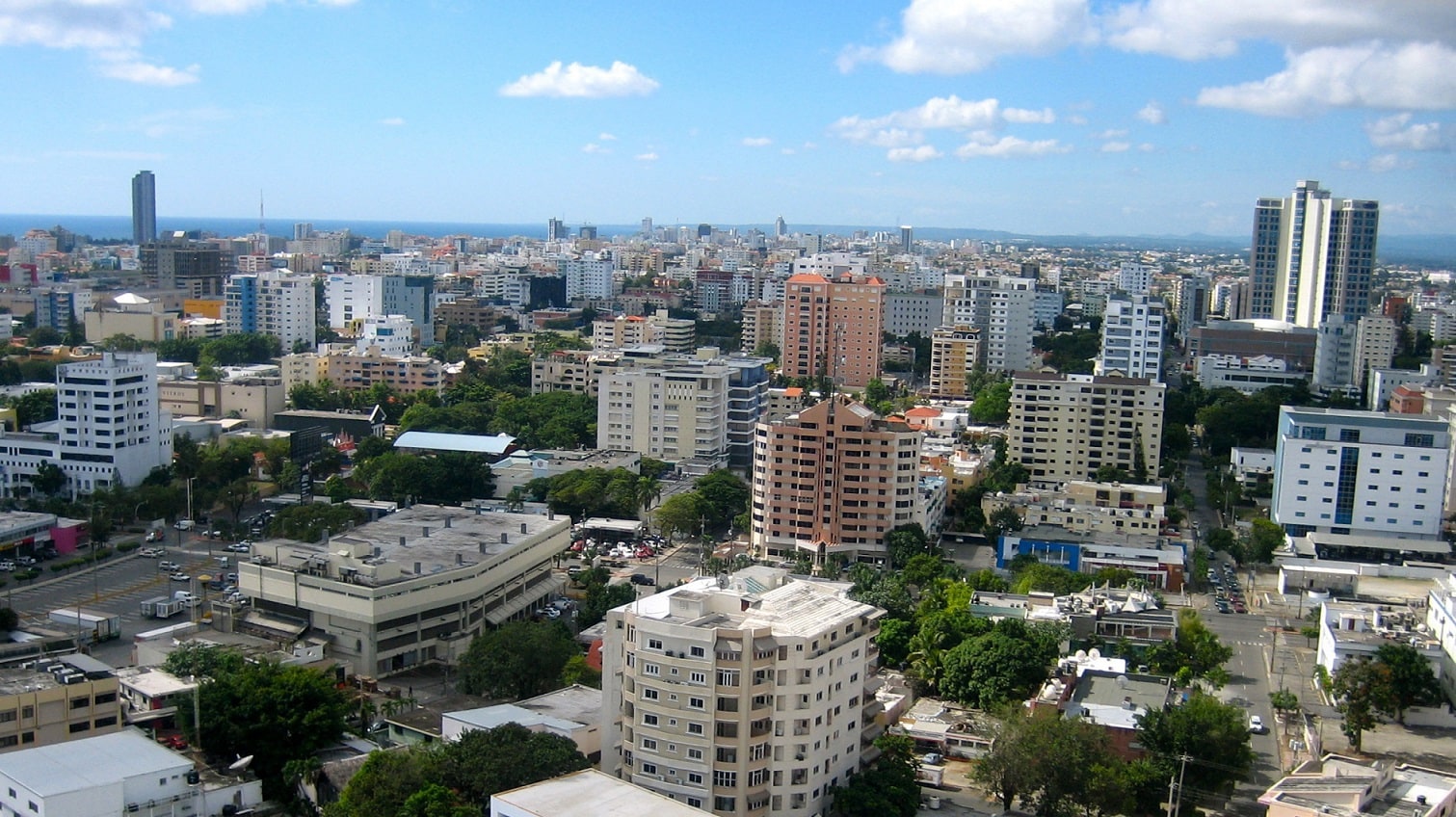 photo source: Good Free Photos
photo source: Good Free Photos
Although the native Taíno people were already living on what is now the Dominican Republic and Haiti, Santo Domingo was not formally founded until 1498. Bartholomew Columbus, younger brother of Christopher Columbus, had moved his settlement to present-day Santo Domingo in 1496 and initially named it La Nueva Isabela after Christopher Columbus' second settlement called Isabella.
Not long after moving, La Nueva Isabela was renamed Santo Domingo in honor of Saint Dominic, and the city has served as the capital of the Dominican Republic ever since. While Santo Domingo has been around for a long time, it has had a very tumultuous history. Throughout its history, Santo Domingo has been plagued by piracy, war, revolutions, and civil war. Despite its past, Santo Domingo has recovered quite a bit and has been enjoying a tourism boom in recent years.
Did You Know?
From 1936 to 1961, Santo Domingo was called Ciudad Trujillo after the Dominican Repbulic's dictator at the the time, Rafael Trujillo. The city reverted back to its original name after Trujillo's assassination.
7. Mexico City (Tenochtitlan)
Year Founded or First Inhabited: 1325
Country: Mexico
Founder(s): Mexica civilization (Aztecs)
Current Population: 9,209,944 (as of 2020)
Total Area: 573 sq mi (1,485 km²)
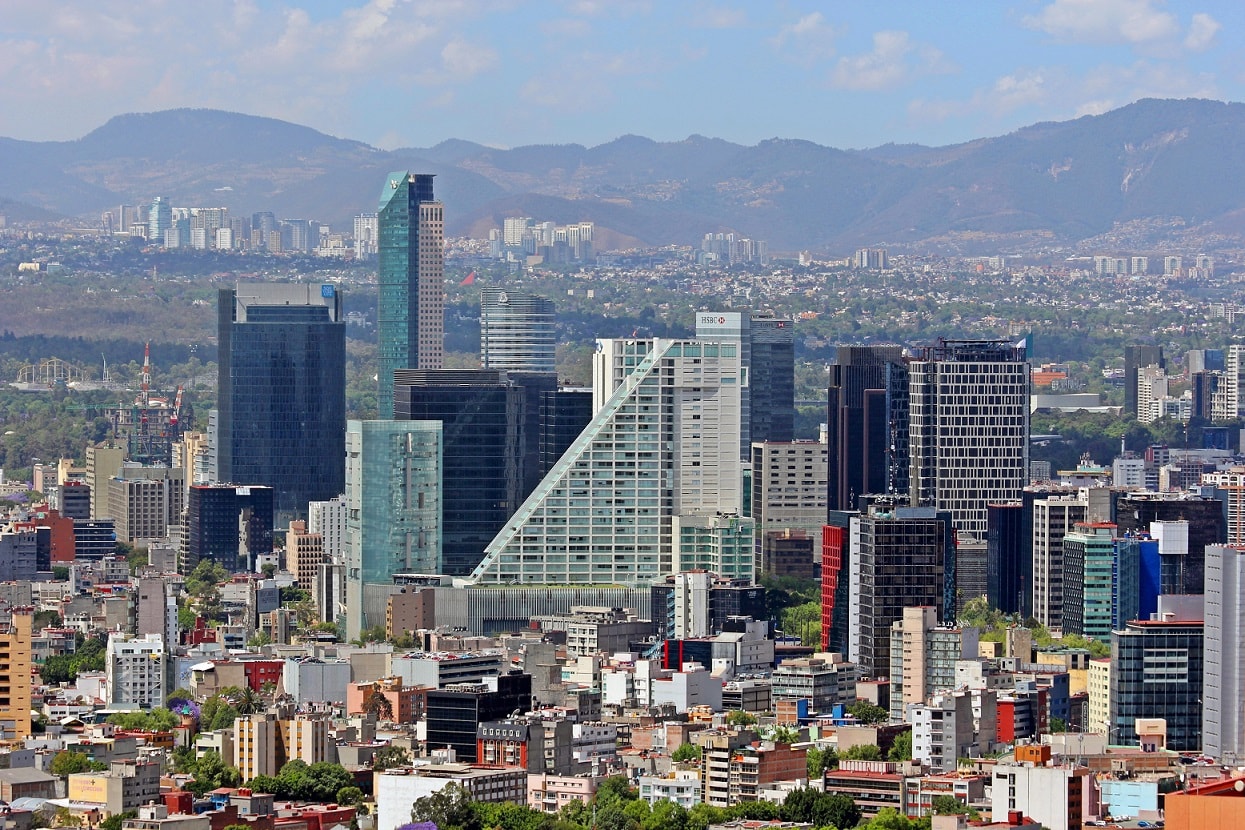 photo source: Wikimedia Commons via Alejandro Islas Photograph AC
photo source: Wikimedia Commons via Alejandro Islas Photograph AC
Mexico City traces its history all the way back to 1325 when it was founded by the Mexica civilization (the Nahua Aztecs) as Tenochtitlan. Over the next few centuries, Tenochtitlan grew into a large city-state and served as the center of the Aztec empire. Tenochtitlan was a major center for trade, military operations, culture, and political power.
In 1519, Spanish conquistador Hernan Cortes arrived at Tenochtitlan and after a long siege, captured the city. The city was rebuilt as the capital of the viceroyalty of New Spain in 1524. Even under Spanish rule, Mexico city remained the center of Mexico and the Spanish the administration of Guatemala, Yucatan, Cuba, Florida, and the Philippines was carried out from the city. Over the next few centuries, Mexico City experienced many ups and downs and today it is one of the largest cities in the world, with a population of over 9 million people.
Did You Know?
Since Mexico City was built on top of what was known as Lake Texcoco, the city does not have the most stable foundation and it is estimated that the city is sinking a rate of four inches (10 cm) annually.
6. Acoma Pueblo (Sky City)
Year Founded or First Inhabited: c.1150 CE
Country: New Mexico, USA
Founder(s): Acoma Pueblo tribe
Current Population: only about 30 or so people live permanently on the settlement but there are about 4,989 tribal members in the area
Total Area: 431,664 acres (174,688 ha)
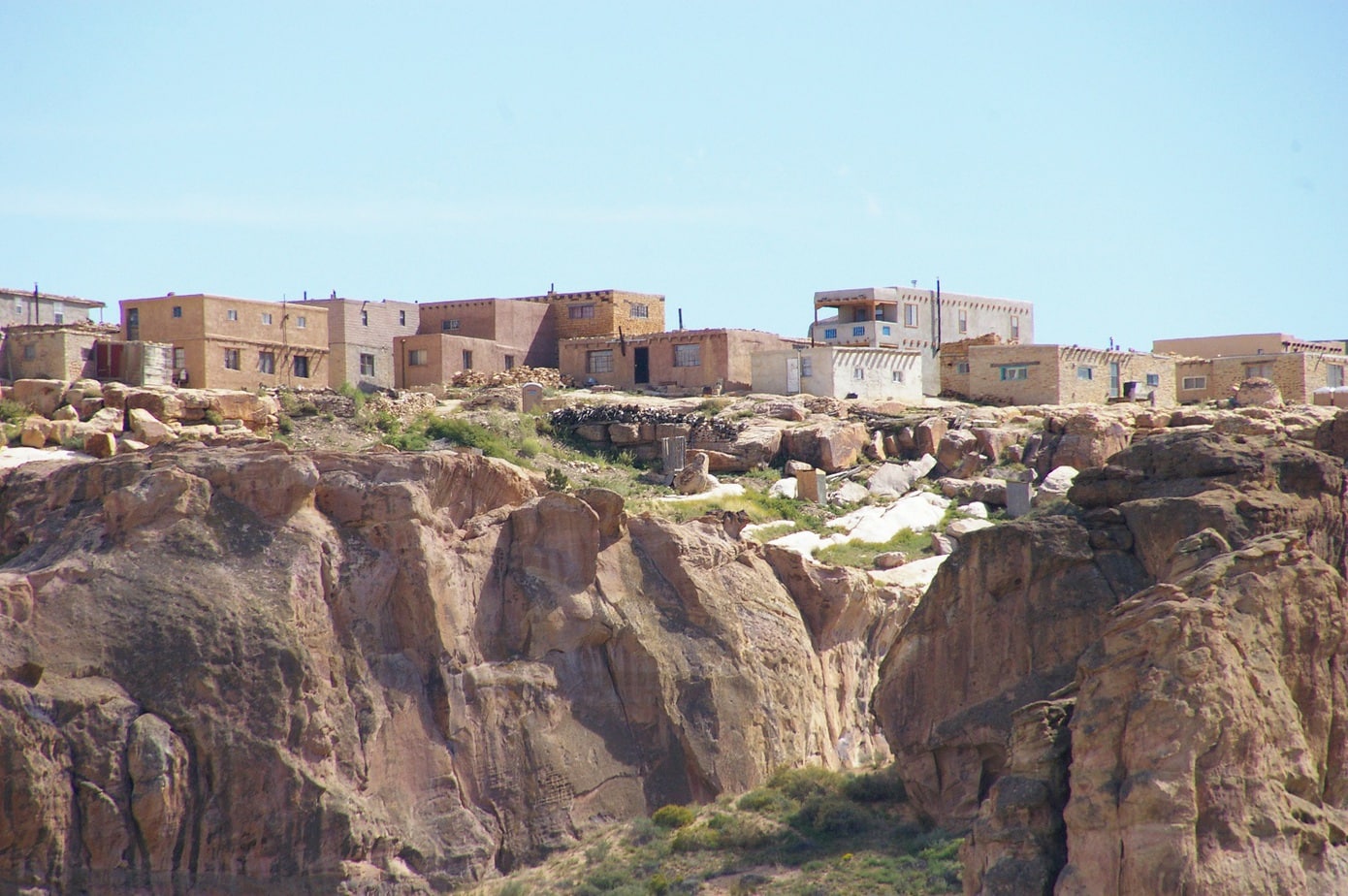 photo source: Wikimedia Commons via Scott Catron
photo source: Wikimedia Commons via Scott Catron
Like the Hopi village of Oraibi, the Acoma Pueblo is not exactly a city, but it is one of the oldest continuously inhabited settlements in the United States. The Pueblo people have been living in Acoma since at least 1150 CE. However, only a few dozen people reside permanently at the settlement today, with younger generations moving to nearby towns and cities.
The Acoma Pueblo are an federally recognized tribal entity. Historically, Acoma Pueblo was much larger, totaling about 5,000,000 acres (2,000,000 ha). Today, the Acoma Pueblo tribe only retains about 10% of this land. The Acoma Pueblo people have retained their culture while embracing modern life and welcome visitors to learn more about their rich history.
Did You Know?
Acoma Pueblo is the only Native American site to be designated as a National Historic Site by the National Trust for Historic Perservation.
5. Oraibi
Year Founded or First Inhabited: 900 – 1000 CE (other sources say 1100 CE)
Country: Arizona, USA
Founder(s): The Hopi tribe
Current Population: Unspecified
Total Area: Unspecified
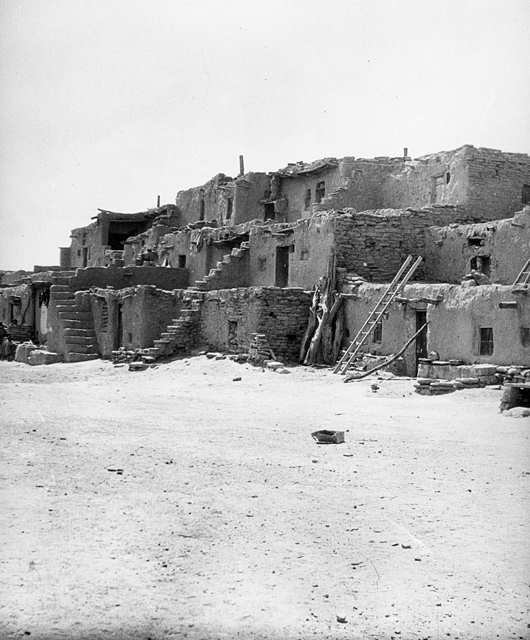 photo source: Wikimedia Commons
photo source: Wikimedia Commons
Oraibi, called Orayvi by its inhabitants, may not be a city in the traditional sense, but it is the oldest continuously inhabited settlement in the United States. This ancient Hopi village was settled around 900 – 1000 CE (a few sources say 1100 CE) and to this day, the Hopi residing in Oraibi have been mostly isolated.
However, in the mid-1800s there was split in the Hopi tribe at Oraibi with some members of the tribe choosing to embrace modernity. These more modern Hopi ended up establishing a new village nearby called Kykotsmovi Village, which is commonly called New Oraibi. The traditionalists remain in Old Oraibi and have maintained there way of live for over 1,000 years.
Did You Know?
Although Oraibi is open to visitors, the Hopi do not necessarily welcome visitors wholeheartedly and photography is prohibited within the village.
4. Antiguo Cuscatlán
Year Founded or First Inhabited: 1054 CE
Country: El Salvador
Founder(s): Topiltzin Atzil
Current Population: 48,027 (as of 2010 Census)
Total Area: 7.49 sq mi (19.41 km²)
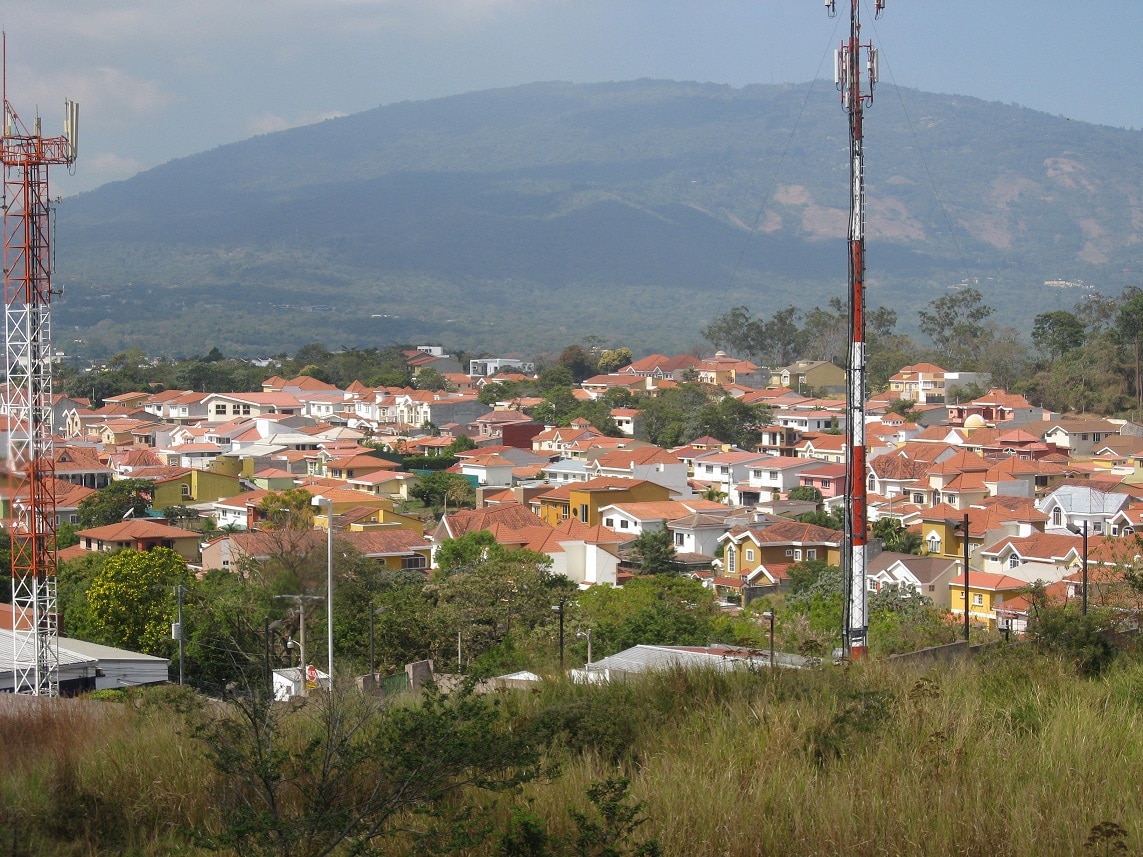 photo source: Wikimedia Commons via Sammiethedeadrat
photo source: Wikimedia Commons via Sammiethedeadrat
According to Antiguo Cuscatlán's official website, it is a young city with an ancient origin. While Antiguo Cuscatlán considers its official founding date to be the 16th century during Spanish conquest, the city's history stretches back much further. In fact, Antiguo Cuscatlán served as the capital city of the Pipil or Cuzcatecs, an indigenous civilization.
According to Pipil texts, Antiguo Cuscatlán was actually founded as Cuzcatlan in 1054 by Topiltzin Atzil, the last king of Tula of Anahuac. For many centuries tens of thousands Pipil lived in Antiguo Cuscatlán, but by the time the the Spanish arrived, there were only a few thousand Pipil remaining in the city. The Pipil tried to fight back against the Spanish conquistadors, but ultimately failed and Antiguo Cuscatlán was incorporated into Spain's municipality.
Did You Know?
Antiguo Cuscatlán means Old Jeweled City, from antiguo, which means ancient or old in Spanish, and Cuscatlán means jeweled city in Nahuat (the language of the Pipil civilization).
3. Motul
Year Founded or First Inhabited: 1050 CE
Country: Mexico
Founder(s): Zac Mutul
Current Population: over 21,508 (as of 2005 Census)
Total Area: 114.92 sq mi (297.63 km²)
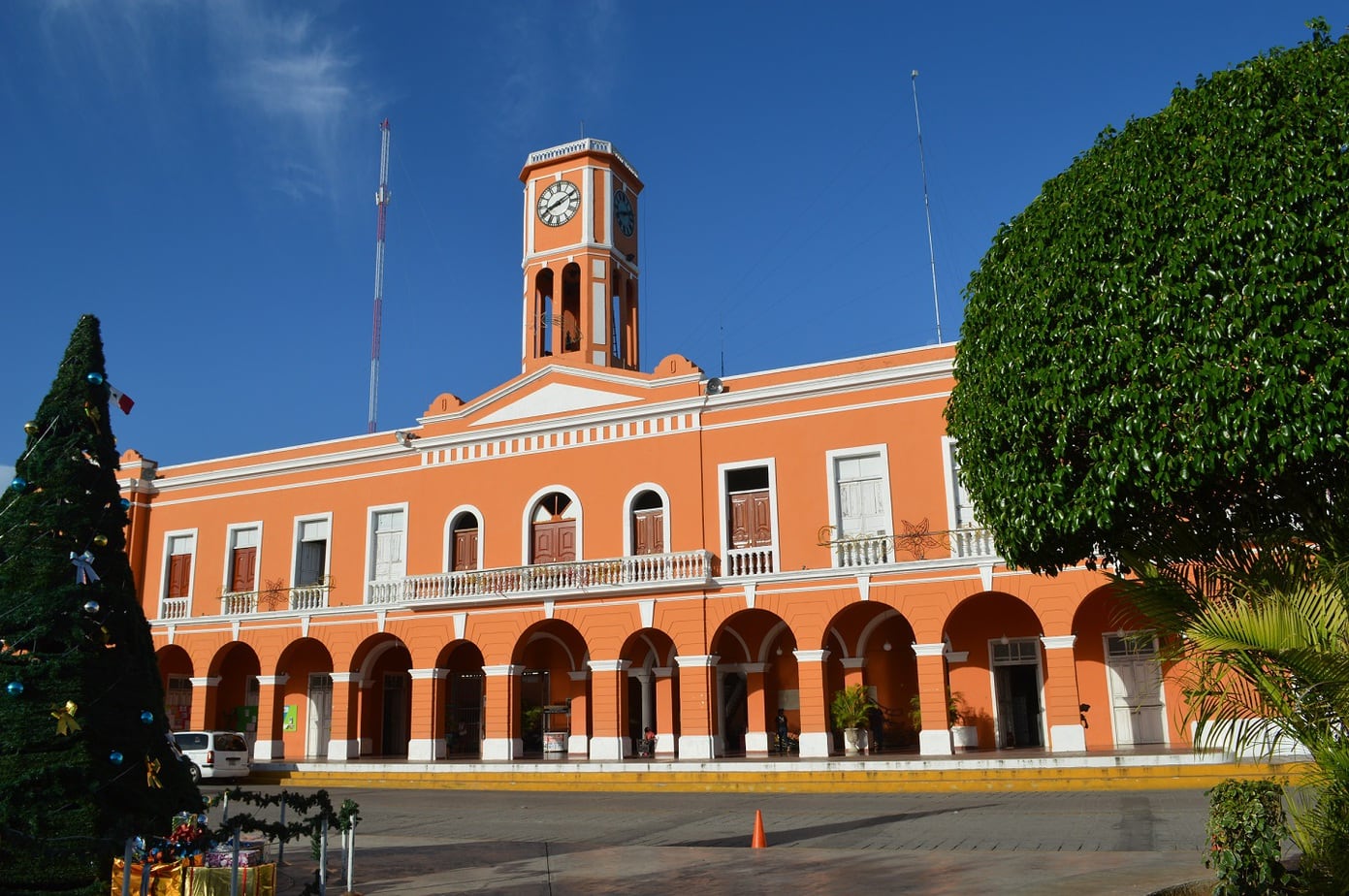 photo source: Wikimedia Commons via AlejandroLinaresGarcia
photo source: Wikimedia Commons via AlejandroLinaresGarcia
Motul was officially founded around 1050 by a priest named Zac Mutul. However, Motul was also the site of a pre-Columbian Maya civilization. For many decades, Motul was ruled by the Pech family. The Pech family established a regional kingdom Cehpech and Motul served as the capital city.
After the Spanish conquered Yucatán, Conquistador Francisco de Montejo made Motul a Spanish colonial town. There is still a Franciscan monastery in Motul from this time period. In 1872, Motul was granted city status and in 1924, the city changed its formal name to Motul de Carrillo Puerto in honor of Felipe Carrillo Puerto, a former Governor of Yucatán who was assassinated in 1924.
Did You Know?
Motul is the birthplace of the popular dish huevos motuleños, which features eggs on tortillas with black beans and cheese. Huevos huevos motuleños is even popular outside of Mexico and commonly served in Cuba and Costa Rica.
2. Cholula
Year Founded or First Inhabited: c.800 – 200 BCE
Country: Mexico
Founder(s): Unknown for sure – possibly descendants of the Aztecs
Current Population: over 151,167 (2019 numbers)
Total Area: 42.87 sq mi (111.03 km²)
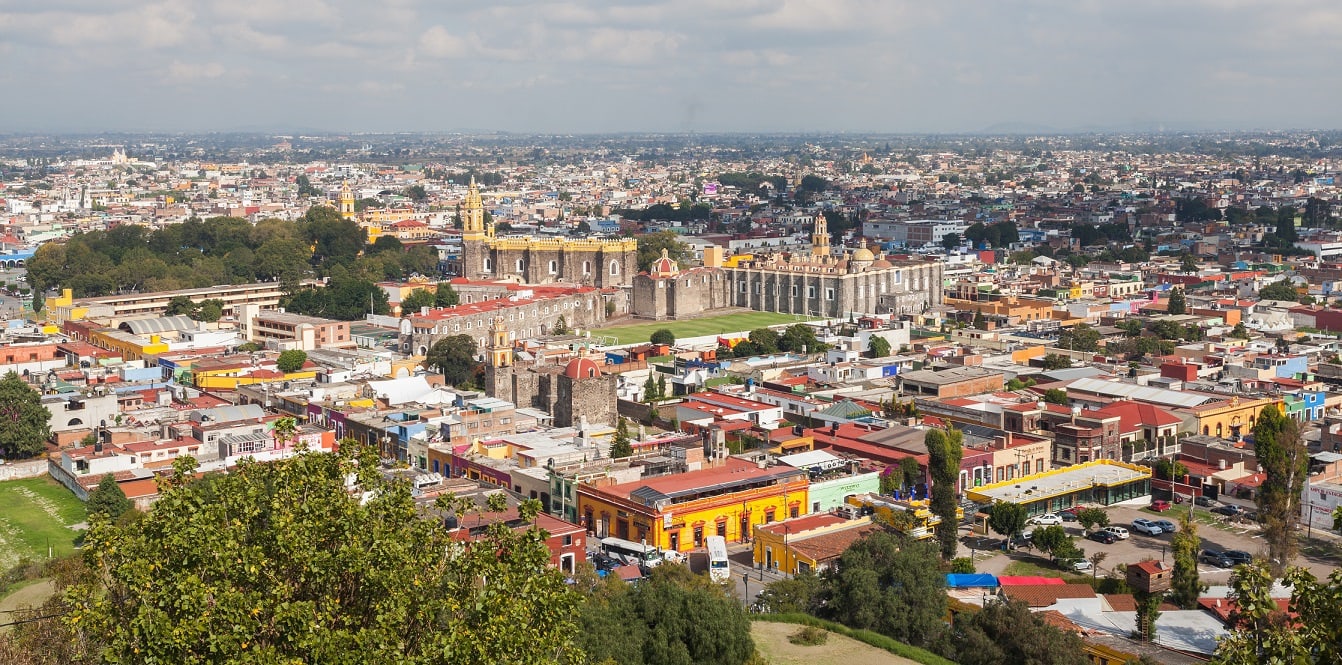 photo source: Wikimedia Commons via Diego Delso
photo source: Wikimedia Commons via Diego Delso
Cholula was established between 800 – 200 BCE and is considered the oldest continuously inhabited settlement in all of the Americas. This ancient city was most important settlement in what is now the state of Puebla. Within a few centuries, the Olmec turned Cholula into a buzzing metropolis and gave rise to great works, including the Great Pyramid of Cholula.
The Great Pyramid of Cholula (also called Tlachihualtepetl) is one of the largest pyramids in the world, standing 181 feet (55 meters) tall with a base that measures over 1,300 feet (396 meters) on each side. The Great Pyramid is Cholula's most popular tourist attraction and receives about 220,000 visitors each year.
Unfortunately, when the Spanish arrived, they built the Iglesia de Nuestra Señora de los Remedios (Our Lady of Remedies Church) on top of the Great Pyramid, which they did not realize was an ancient holy site. However, because of the church, the Great Pyramid has remained an important pilgrimage site since the 16th century.
Did You Know?
The Great Pyramid of Cholula was dedicated to the Aztec god Quetzalcoatl, who was the feathered serpent deity of god of wind, air, and learning.
1. Tepoztlán
Year Founded or First Inhabited: c.1500 BCE
Country: Mexico
Founder(s): Unknown who first inhabited area
Current Population: 44,517 (2019 numbers)
Total Area: Unspecified
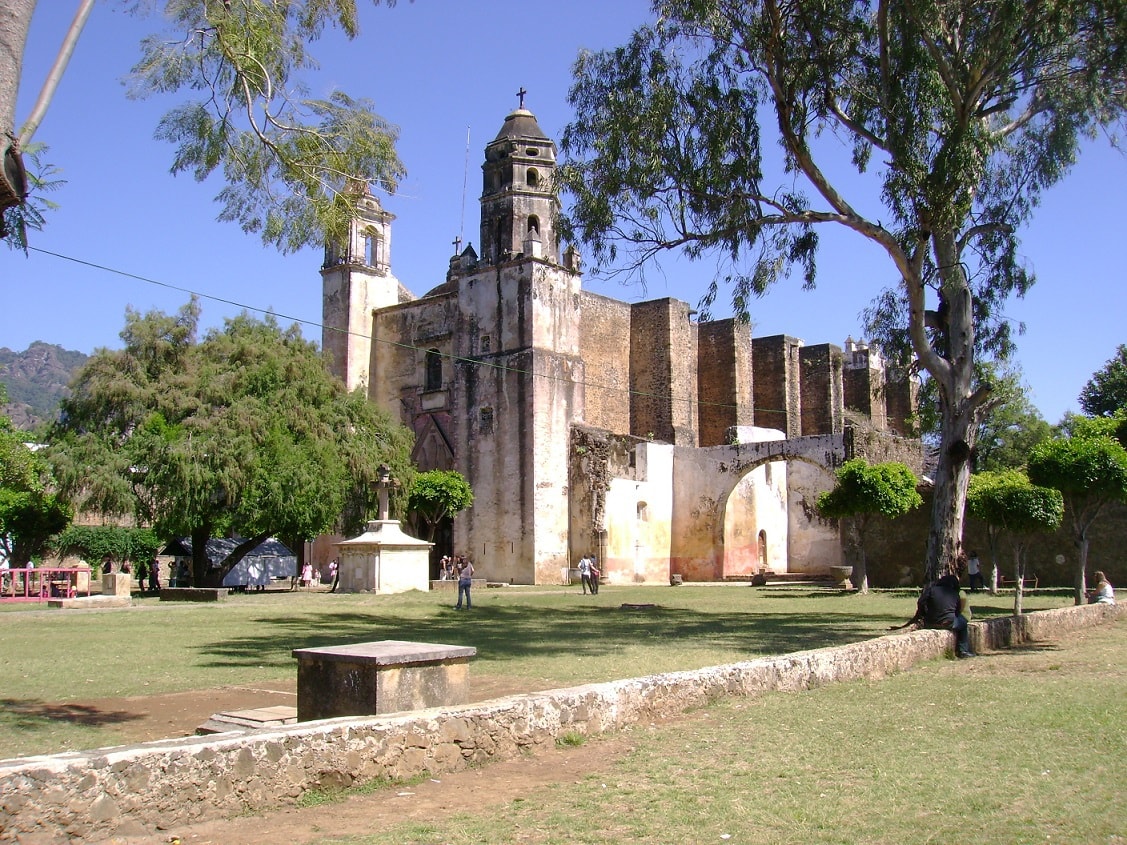 photo source: Wikimedia Commons via Gunnar Wolf
photo source: Wikimedia Commons via Gunnar Wolf
Today, Tepoztlán is one of the most popular tourist destinations not far from Mexico City. This ancient city has been inhabited since at least 1500 BCE , making it the oldest city in North America. Tepoztlán is most famous for the remains of El Tepozteco temple, which is now situated in a protected National Park.
While Tepoztlán is a few thousand years old, El Tepozteco temple only dates back to the Post-Classic Period (900-1521 CE) and has inscriptions dating from 1452 and 1502. El Tepozteco is dedicated to Tepoztecatl, the Aztec god of the alcoholic beverage pulque.
Did You Know?
Tepoztlán is a "Pueblo Magico," which is a title granted by the Ministry of Tourism of Mexico to cities that work to protect and preserve the culture of an area.
OTHER POSTS YOU MAY BE INTERESTED IN
Source: https://www.oldest.org/geography/cities-north-america/
0 Response to "The Oldest Site in the Present day United States to Be Continuously Inhabited by Europeans is"
Post a Comment